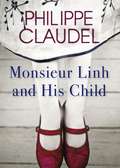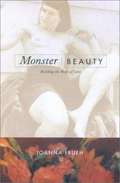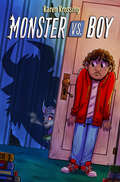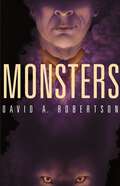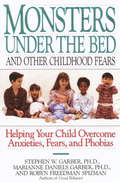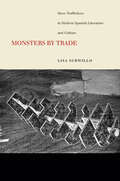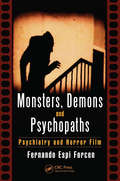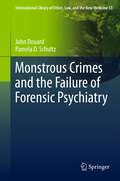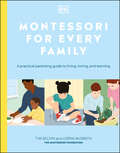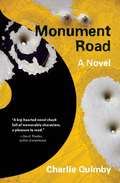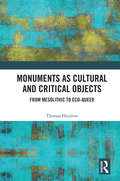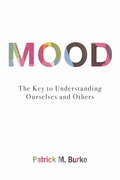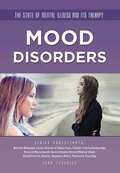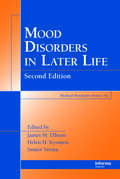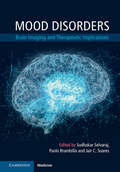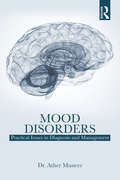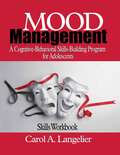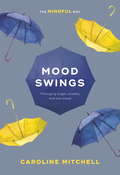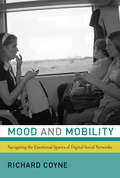- Table View
- List View
Monsieur Linh and His Child
by Philippe ClaudelTraumatized by memories of his war-ravaged country, his son and daughter-in-law dead, Monsieur Linh travels to a foreign land to bring the child in his arms to safety. To begin with, he is too afraid to leave the refugee centre, but the first time he braves the freezing cold to walk the streets of this strange, fast-moving town, he encounters Monsieur Bark, a widower whose dignified sorrow mirrors his own. Though they have no shared language, an instinctive friendship is forged; but Monsieur Linh's stay in the dormitory is only temporary. Sooner or later he and his child must find a permanent home.Delicate and restrained, but with an extraordinary twist, Monsieur Linh and His Child is an immensely moving novel of perfect simplicity, by the author of Brodeck's Report.
Monsieur Linh and His Child
by Philippe ClaudelTraumatized by memories of his war-ravaged country, his son and daughter-in-law dead, Monsieur Linh travels to a foreign land to bring the child in his arms to safety. To begin with, he is too afraid to leave the refugee centre, but the first time he braves the freezing cold to walk the streets of this strange, fast-moving town, he encounters Monsieur Bark, a widower whose dignified sorrow mirrors his own. Though they have no shared language, an instinctive friendship is forged; but Monsieur Linh's stay in the dormitory is only temporary. Sooner or later he and his child must find a permanent home.Delicate and restrained, but with an extraordinary twist, Monsieur Linh and His Child is an immensely moving novel of perfect simplicity, by the author of Brodeck's Report.
Monster / Beauty: Building the Body of Love
by Joanna FruehPerformance artist Joanna Frueh repositions notions and standards of female beauty, addressing ideas about the erotic, beauty, older women, pleasure and the body. She uses the concept of monster (derived from the Latin monstrare, to show) to contend that beauty is artifice, pleasure/work, cultural invention, not natural fact.
Monster vs. Boy
by Karen KrossingA moving middle-grade novel about unlikely friendships and facing our fears—or monsters!—perfect for fans of of Wendy Mass's and Rebecca Stead&’s Bob.&“Monstrously magical and delicious!&”—William Alexander, National Book Award Winner for Goblin Secrets"A heartfelt tale of meeting your monsters and setting them free." —Linda Urban, acclaimed author of A Crooked Kind of PerfectOn the edge of town, a boy named Dawz lives with his sister and their uncle-turned-adoptive-father, Pop. No one in their ramshackle house knows that a monster—who is smaller than a bear cub—lives in Dawz&’s bedroom closet. She calls herself Mim. When a series of events forces Mim to leave her closet, she sets out on a quest to unlock the magic of books, but will Dawz be willing to help her? The story of a monster who desperately wants to be seen and the reluctant boy who wishes he weren&’t the only one who could, this exploration of found family, fear and mental health, and intergenerational trauma begs the question: What if the monsters that haunt us aren&’t monsters at all?
Monsters (The Reckoner)
by David A. Robertson&“The ending...is so unexpected that readers will eagerly anticipate [the] third volume.&”—Kirkus ReviewsCole Harper is struggling to settle into life in Wounded Sky First Nation. He may have stopped a serial killer but the trouble is far from over. A creature lurks in the shadows of Blackwood Forest, the health clinic is on lockdown by a mysterious organization, and long-held secrets threaten to bubble to the surface. Can Cole learn the truth about his father's death? Why won't Choch give him a straight answer? Where the heck is Jayne? Oh, and high school sucks.
Monsters (The Reckoner)
by David A. Robertson&“The ending...is so unexpected that readers will eagerly anticipate [the] third volume.&”—Kirkus ReviewsCole Harper is struggling to settle into life in Wounded Sky First Nation. He may have stopped a serial killer but the trouble is far from over. A creature lurks in the shadows of Blackwood Forest, the health clinic is on lockdown by a mysterious organization, and long-held secrets threaten to bubble to the surface. Can Cole learn the truth about his father's death? Why won't Choch give him a straight answer? Where the heck is Jayne? Oh, and high school sucks.
Monsters Under the Bed and Other Childhood Fears
by Stephen W. Garber Marianne Daniels Garber Robyn Freedman SpizmanA step-by-step manual designed to help parents cope with children's fears; this book discusses common fears, how to respond to childhood anxieties, and other ways to deal with frightened children.From the Hardcover edition.
Monsters by Trade: Slave Traffickers in Modern Spanish Literature and Culture
by Lisa SurwilloTransatlantic studies have begun to explore the lasting influence of Spain on its former colonies and the surviving ties between the American nations and Spain. In Monsters by Trade, Lisa Surwillo takes a different approach, explaining how modern Spain was literally made by its Cuban colony. Long after the transatlantic slave trade had been abolished, Spain continued to smuggle thousands of Africans annually to Cuba to work the sugar plantations. Nearly a third of the royal income came from Cuban sugar, and these profits underwrote Spain's modernization even as they damaged its international standing. Surwillo analyzes a sampling of nineteenth-century Spanish literary works that reflected metropolitan fears of the hold that slave traders (and the slave economy more generally) had over the political, cultural, and financial networks of power. She also examines how the nineteenth-century empire and the role of the slave trader are commemorated in contemporary tourism and literature in various regions in Northern Spain. This is the first book to demonstrate the centrality of not just Cuba, but the illicit transatlantic slave trade to the cultural life of modern Spain.
Monsters by Trade: Slave Traffickers in Modern Spanish Literature and Culture
by Lisa SurwilloTransatlantic studies have begun to explore the lasting influence of Spain on its former colonies and the surviving ties between the American nations and Spain. In Monsters by Trade, Lisa Surwillo takes a different approach, explaining how modern Spain was literally made by its Cuban colony. Long after the transatlantic slave trade had been abolished, Spain continued to smuggle thousands of Africans annually to Cuba to work the sugar plantations. Nearly a third of the royal income came from Cuban sugar, and these profits underwrote Spain's modernization even as they damaged its international standing. Surwillo analyzes a sampling of nineteenth-century Spanish literary works that reflected metropolitan fears of the hold that slave traders (and the slave economy more generally) had over the political, cultural, and financial networks of power. She also examines how the nineteenth-century empire and the role of the slave trader are commemorated in contemporary tourism and literature in various regions in Northern Spain. This is the first book to demonstrate the centrality of not just Cuba, but the illicit transatlantic slave trade to the cultural life of modern Spain.
Monsters, Demons and Psychopaths: Psychiatry and Horror Film
by Fernando Espi ForcenDescriptions of monsters, vampires, demonic possessions, and psychopaths in horror films have been inspired by psychiatric knowledge about mental illness, leading to several stereotyped models of horror that have prevailed through decades. Some scholars have proposed that horror films can be a teaching tool for psychopathology, but for the most part the genre has been underutilized as a learning tool. This book explores the idea of relating horror films to psychiatric ideas as a way of engaging people in learning.
Monstrous Crimes and the Failure of Forensic Psychiatry
by John Douard Pamela D. SchultzThe metaphor of the monster or predator--usually a sexual predator, drug dealer in areas frequented by children, or psychopathic murderer--is a powerful framing device in public discourse about how the criminal justice system should respond to serious violent crimes. The cultural history of the monster reveals significant features of the metaphor that raise questions about the extent to which justice can be achieved in both the punishment of what are regarded as "monstrous crimes" and the treatment of those who commit such crimes. This book is the first to address the connections between the history of the monster metaphor, the 19th century idea of the criminal as monster, and the 20th century conception of the psychopath: the new monster. The book addresses, in particular, the ways in which the metaphor is used to scapegoat certain categories of crimes and criminals for anxieties about our own potential for deviant, and, indeed, dangerous interests. These interests have long been found to be associated with the fascination people have for monsters in most cultures, including the West. The book outlines an alternative public health approach to sex offending, and crime in general, that can incorporate what we know about illness prevention while protecting the rights, and humanity, of offenders. The book concludes with an analysis of the role of forensic psychiatrists and psychologists in representing criminal defendants as psychopaths, or persons with certain personality disorders. As psychiatry and psychology have transformed bad behavior into mad behavior, these institutions have taken on the legal role of helping to sort out the most dangerous among us for preventive "treatment" rather than carceral "punishment."
Montessori for Every Family: A Practical Parenting Guide to Living, Loving and Learning
by DKThis parenting book shows you how to make magical Montessori memories — every day.This beautiful, modern Montessori book for parents outlines the key principles of this parenting approach and shows you how you can easily apply this at home. It provides a valuable starting point for parents to help them create a family life inspired by the ethos of Montessori.This practical parenting guide makes Montessori accessible to every parent and child, regardless of time pressures and resources. It includes: • Outlines of the Montessori principles clearly and succinctly: respect, freedom, curiosity, creativity, responsibility and independence. • Examples on how to apply these principles to everyday life – with sections on breakfast time, school/daycare drop off, school/daycare pick up, playtime, meal times, homework time, bath time and bedtime. • Demonstrations of how to apply Montessori techniques to an older child new to Montessori and how to flex and build on the techniques as your child grows up.Montessori is a unique educational philosophy created by Maria Montessori that fosters the growth of the whole child. From enjoying nature together to free time and weekends, every aspect of family life is an opportunity for meaningful engagement with your child. Montessori For Every Family offers you pragmatic, real-life advice, suitable for children of all ages, showing you how easy and natural it is to create a nourishing and empowering environment at home for everyone.Even if your child won&’t go to a Montessori school, a Montessori home can still be an invaluable bridge to reinforcing your child&’s natural curiosity and setting the foundation for lifelong learning. This is the only Montessori book that recognizes that most parents don&’t have the time and resources to overhaul their lives to fully embrace a parenting philosophy, but instead need practical, immediate guidance that is effective. "You will want to refer to this book again and again." Paul Epstein, PhD, Designs of Lifelong Learning
Monument Road
by Charlie QuimbyLeonard Self has spent a year unwinding his ranch, paying down debts, and fending off the darkening. Just one thing left: taking his wife's ashes to her favorite overlook, where he plans to step off the cliff with her into a stark and beautiful landscape. But Leonard finds he has company on a route that intertwines old wounds and new insights that make him question whether his life is over after all."Part modern western, part mystery, this first novel will appeal to fans of Louise Erdrich and Kent Haruf. Quimby's prose reads so true, it breaks the heart."-BOOKLIST, starred review"The Colorado setting and the author's simple style of prose perfectly complement the complexity of the human spirit in this superb debut."-PUBLISHERS WEEKLY"Monument Road is so rich with landscape, character and event that such a small telling cannot begin to do it justice. Read this exquisite story; it is a joy and a wonder and a tour de force of authorship."-SHELF AWARENESS"Quimby's storytelling, his humane impulses and his lyrical passages on the meaning of love and time, and on the history, geology and botany of the region, will surely impress readers."-MINNEAPOLIS STAR TRIBUNE"Quimby uses words as spare as Colorado's landscape to describe characters who range from endearing to crusty, wise to foolish, spiritual to downright evil. The folks who live near Monument Road aren't just descriptions in a book; they're complex people readers will care about."--FOREWORD REVIEWS"Not to be overlooked is the love, humor and friendship among pain and loss, which makes it a book far more about the richness of life than the finality of death."-GRAND JUNCTION DAILY SENTINEL"Monument Road is a wonderful novel full of wit and wisdom, generosity and malice."-GRAND JUNCTION FREE PRESS"Quimby's writing is sensitive and graceful; he has a talent for revealing slowly blossoming characters who are beautifully flawed and realistic."-THE DESERET NEWS"While not exactly a happy novel, Monument Road is beautiful and real, full of landscape imagery of the American Southwest as a poignant and sometimes haunting metaphor of our connections to the land."-15 BYTES"This is a novel with size and scope and generosity, with an acute understanding of human nature and a deep appreciation for the ways people face change and work out their lives in relation to each other."-Kent Meyers, author of Twisted Tree and The Work of Wolves"In prose that might have been chiseled from the magnificent landscape he describes, Charlie Quimby has written a great big American Novel. Full of pathos and humor and sadness, you won't reach the end of this book without feeling fuller and wiser. What a gift Charlie has given us."-Peter Geye, author of The Lighthouse Road and Safe from the Sea"Monument Road is a legitimate modern western, complete with an impressively authentic and aging rancher, heartache, ghosts, low-lifes, a rural landscape undergoing radical transformation, a glut of evangelical churches, and the ancient, powerful cliffs and mesas that surround it all, in southwestern Colorado. The narrative is likewise unpredictable and wild! A pleasure to read."-Bonnie Nadzam, author of Lamb"The landscape and characters of Monument Road ring true. Charlie Quimby has created a story that is hard to forget. His attention to the details of a fading life and life style are spot on and will be a window to any reader's understanding of the central phenomenon of the New West."-Dan O'Brien, author of Stolen Horses and Buffalo for the Broken Heart: Restoring Life to a Black Hills Ranch"Monument Road is a big-hearted novel chock full of memorable characters, a pleasure to read."-David Rhodes, author of Jewelweed and Driftless
Monuments as Cultural and Critical Objects: From Mesolithic to Eco-queer
by Thomas HoultonMonuments as Cultural and Critical Objects explores monuments as political, psychical, social and mystical objects. Incorporating autoethnography, psychoanalysis, deconstruction, postcolonialism, and queer ecology, Houlton argues for a radical, interdisciplinary approach to our monument culture. Tracing historical developments in monuments alongside contemporary movements such as Rhodes Must Fall and Black Lives Matter, Houlton provides an in-depth critique of monument sites, as well as new critical and conceptual methodologies for thinking across the field. Alongside analysis of monuments to the Holocaust, colonial figures, and LGBTQIA+ subjects, this book provides new critical engagements with the work of D.W. Winnicott, Marion Milner, Jacques Derrida, Edward Said, Eve Sedgwick, and others. Houlton traces the potential for monuments to exert great influence over our sense of self, nation, community, sexuality, and place in the world. Exploring the psychic and physical spaces these objects occupy—their aesthetics, affects, politics, and powers—this book considers how monuments can challenge our identities, beliefs, and our very notions of remembrance. The interdisciplinary nature of Monuments as Cultural and Critical Objects means that it is ideally placed to intervene across several critical fields, particularly museum and heritage studies. It will also prove invaluable to those engaged in the study of monuments, psychoanalytic object relations, decolonization, queer ecology, radical death studies, and affect theory.
Mood
by Patrick M. BurkeA reader-friendly yet in-depth overview of the latest research on mood as the way we are tuned to the world. This book examines the central role that mood plays in determining our outlook on life and our ability to cope with its challenges. The central theme is that mood determines how we are tuned to the world. Tuning emerges over the course of our earliest development as environmental and genetic influences form the neural circuits and set how they function across the lifespan in daily life and under conditions of stress. How each person is tuned becomes the basis for resilience or vulnerability to events. Some will take events in stride; others may become angry, anxious, or sad. A child psychiatrist with decades of clinical experience treating patients, the author stresses that relationships play a central role in shaping our mood. Security or insecurity, loss or the fear of loss of key relationships, especially in childhood, can have telling effects on the way we view the world. A chapter is devoted to each of the disorders where mood is a central issue: depression, anxiety, bipolar disorder, and antisocial disruptive disorders. The author then discusses the various "talking therapies" and the main classes of medication often administered to treat emotional disturbances. Burke concludes by summarizing the latest research on preventing mood disorders and discussing the impact that illness can have on emotional well-being and the role of mood in resilience and recovery.
Mood Disorders (The State of Mental Illness and Its Ther)
by Joan EsherickEveryone experiences the "blues" now and then as well as times of joy and self-confidence. Most people even experience mood swings--times when they move quickly from feelings like joy to opposite feelings like sorrow. But what happens when normal moods become so extreme that a person can't think, feel, or act appropriately? What if a person is so "up" he does foolish, even dangerous, things? What if he's so "down" he can barely get out of bed? The U.S. Surgeon General reports that, at any one time, between 10 and 15 percent of the adolescent population in the United States suffers from major depression. That's one in ten teens! According to the National Institute of Mental Health, 20 to 40 percent of those will develop bipolar disorder (manic depression) within five years. Often undiagnosed or misdiagnosed, mood disorders present major challenges, such as increased risk for illness, higher probability of social and interpersonal problems, and greater likelihood of substance abuse for those who suffer with them. Mood disorders, when left untreated, can even be fatal: seven percent of adolescents with major depressive disorder commit suicide. What are mood disorders, and how can they be treated? Using numerous case studies and sidebars, and written in language that is easy to understand, Mood Disorders takes a comprehensive look at the causes and symptoms of mood disorders. In its pages, you will learn about the methods for diagnosis and treatment, specific drugs used to treat mood disorders, and alternative treatment strategies. Along the way, you will discover that mood disorders, though serious and challenging, are treatable, and help can be found.
Mood Disorders and Antidepressants
by Stephen M. Stahl Nancy MuntnerWith the fully revised fourth edition of Essential Psychopharmacology, Dr Stahl returns to the essential roots of what it means to become a neurobiologically empowered psychopharmacologist, expertly guided in the selection and combination of treatments for individual patients in practice. This remains the essential text for all students and professionals in mental health seeking to understand and utilize current therapeutics, and to anticipate the future for novel medications. This special edition, featuring the extracted chapters on mood disorders and antidepressants, provides a readable digest on these specific issues for experts and novices alike.
Mood Disorders in Later Life (Medical Psychiatry Series)
by Paul C. EtterMood Disorders in Later Life examines the spectrum of mood disorders in older adults, focusing on major and nonmajor depressive disorders, bipolar disorder (manic and depressive phases), depression with psychotic features, and vascular depression. In depth discussions of diagnosis and treatment options including psychotherapy, pharmacotherapy, and
Mood Disorders: Brain Imaging and Therapeutic Implications
by Paolo Brambilla Sudhakar Selvaraj Jair C SoaresMood disorders such as depression and bipolar disorder are common mental illnesses, affecting millions of patients worldwide. The application of newly available brain imaging methods to the study of mood disorders holds substantial promise in uncovering the brain mechanisms affected in these illnesses. This comprehensive and authoritative text features contributions from leading international experts, providing easily accessible information on the study of the brain mechanisms involved in the causation of mood disorders and the available treatments. Topics covered include the potential of magnetoencephalography (MEG), neuroimaging brain inflammation in depression, electrophysiology studies in mood disorders, and the applications of machine learning, filling an important gap in available neuropsychiatric literature and highlighting new developments. An invaluable resource for practitioners in the fields of psychiatry, neurology, primary care medicine, and related mental health professions, as well as researchers, students, graduate and post-graduate trainees.
Mood Disorders: Practical Issues in Diagnosis and Management
by Ather MuneerMood Disorders: Practical Issues in Diagnosis and Management provides cutting edge knowledge about the diagnosis and treatment of principal mood disorders, namely major depressive disorder and bipolar disorder. Covering diagnosis, differentiating features, and illness course and trajectories of principal mood disorders, Dr. Ather Muneer provides essential information in a succinct and practical manner, while highlighting significant new findings in the area. This book will help a broad range of mental health professionals better treat the millions of people with mood disorders across the globe.
Mood Management: A Cognitive-behavioral Skills-building Program For Adolescents; Skills Workbook
by Carol A. LangelierWritten at a level that is easy for adolescents to understand, this illustrated skills workbook features exercises and checklists for participants to use as they work through the Mood Management program.
Mood Stabilizers
by Stephen M. Stahl Nancy Muntner Sara BallAll of the titles in the Stahl s Illustrated Series are designed to be fun. Concepts are illustrated by full-color images that will be familiar to all readers of Stahl s Essential Psychopharmacology, Third Edition and The Prescriber s Guide. The texts in this user-friendly series can be supplements to figures, images, and tables. The visual learner will find that these books make psychopharmacology concepts easy to master, while the non-visual learner will enjoy a shortened text version of complex psychopharmacology concepts. Within each book, each chapter builds on previous chapters, synthesizing information from basic biology and diagnostics to building treatment plans and dealing with complications and comorbidities. Novices may want to approach Stahl s Illustrated Series by first looking through all the graphics and gaining a feel for the visual vocabulary. Readers more familiar with these topics should find that going back and forth between images and text provides an interaction with which to vividly conceptualize complex pharmacologies. And, to help guide the reader toward more in-depth learning about particular concepts, each book ends with a Suggested Reading section. ************************************** CME Information Sponsor This activity is sponsored by Neuroscience Education Institute. Support This activity is supported solely by the sponsor, Neuroscience Education Institute. Neither the Neuroscience Education Institute nor Stephen M. Stahl, MD, PhD, has received any funds or grants in support of this educational activity. Accreditation and Credit Designation Statements The Neuroscience Education Institute is accredited by the Accreditation Council for Continuing Medical Education to provide continuing medical education for physicians. The Neuroscience Education Institute designates this educational activity for a maximum of 3. 0 AMA PRA Category 1 Credits TM. Physicians should only claim credit commensurate with the extent of their participation in the activity. Non-physicians may receive a certificate of participation for completing this activity. CME Credit Expiration Date: June, 2011
Mood Swings: Managing Anger, Anxiety And Low Mood
by Caroline MitchellDo you have frequent, intense mood swings? Do they seem to happen for no real reason? Mood swings are normal reactions to life events, but, if your emotions are dominating your life, it might be time to take action. Mood Swings provides effective exercises and advice to help manage those dips in mood that leave you sad, mad or anxious. Topics include:causes of mood swingstriggers, such as lack of sleep, diet, alcohol and medical conditionseffects on the brain and the circulatory and digestive systemshow mindfulness can help ? what the research showspractising stress reductionmindful breathing, meditation and visualizationthe benefits of keeping a mood diarytips to help stabilize moodcounselling and other helpYou don't have to let anger, anxiety and depression get the upper hand, says Caroline Mitchell. Instead, boost your mood with this inspiring, practical book.
Mood Swings: Managing Anger, Anxiety And Low Mood
by Caroline MitchellDo you have frequent, intense mood swings? Do they seem to happen for no real reason? Mood swings are normal reactions to life events, but, if your emotions are dominating your life, it might be time to take action. Mood Swings provides effective exercises and advice to help manage those dips in mood that leave you sad, mad or anxious. Topics include:causes of mood swingstriggers, such as lack of sleep, diet, alcohol and medical conditionseffects on the brain and the circulatory and digestive systemshow mindfulness can help – what the research showspractising stress reductionmindful breathing, meditation and visualizationthe benefits of keeping a mood diarytips to help stabilize moodcounselling and other helpYou don't have to let anger, anxiety and depression get the upper hand, says Caroline Mitchell. Instead, boost your mood with this inspiring, practical book.
Mood and Mobility: Navigating the Emotional Spaces of Digital Social Networks
by Richard CoyneAn argument that as we engage with social media on our digital devices we receive, modify, intensify, and transmit moods.We are active with our mobile devices; we play games, watch films, listen to music, check social media, and tap screens and keyboards while we are on the move. In Mood and Mobility, Richard Coyne argues that not only do we communicate, process information, and entertain ourselves through devices and social media; we also receive, modify, intensify, and transmit moods. Designers, practitioners, educators, researchers, and users should pay more attention to the moods created around our smartphones, tablets, and laptops.Drawing on research from a range of disciplines, including experimental psychology, phenomenology, cultural theory, and architecture, Coyne shows that users of social media are not simply passive receivers of moods; they are complicit in making moods. Devoting each chapter to a particular mood—from curiosity and pleasure to anxiety and melancholy—Coyne shows that devices and technologies do affect people's moods, although not always directly. He shows that mood effects are transitional; different moods suit different occasions, and derive character from emotional shifts. Furthermore, moods are active; we enlist all the resources of human sociability to create moods. And finally, the discourse about mood is deeply reflexive; in a kind of meta-moodiness, we talk about our moods and have feelings about them. Mood, in Coyne's distinctive telling, provides a new way to look at the ever-changing world of ubiquitous digital technologies.
